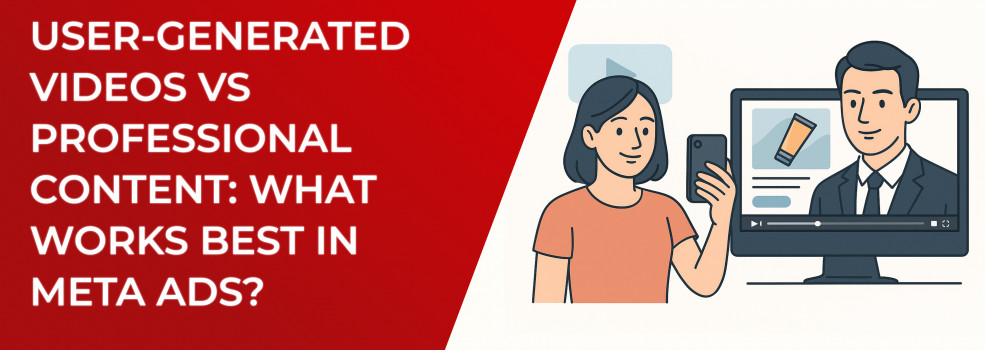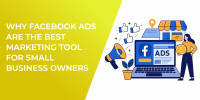Open any Meta platform and you will see two very different storytelling styles vying for your attention. One feels glossy, scripted and cinematic. The other looks spontaneous, candid and often shaky. Yet both styles can hit impressive Facebook ad performance numbers once paired with smart Facebook ad optimization. In the next few minutes we will explore how each creative type works, where it excels, and how you can decide which to use for your next campaign.
For anyone still brushing up on the basics, Facebook Ad Targeting 101 walks through the core audience options new advertisers need to master.
Getting Oriented: Two Creative Camps
Before we dive into strategy, it helps to lay out a quick side-by-side comparison. Think of the table below as a map that shows you where each creative style starts and how long it usually takes to produce.
Now that you have the map, keep this contrast in mind: UGC succeeds by feeling real while professional content succeeds by feeling refined. Everything that follows hinges on that difference.
Why UGC Often Wins the First Scroll
Imagine you are thumbing through Reels on a commuter train. A selfie-style video pops up, someone just like you is unboxing a product, and suddenly it does not feel like an ad at all. That familiarity has measurable effects:
-
Native look and feel – Raw storytelling blends with organic posts, which encourages longer watch times and delivers ad impressions viewers will actually finish.
-
Built-in social proof – A relatable face can lift the average click-through rate far above polished commercials, especially in lifestyle or wellness categories.
-
Rapid creative iteration – Because production costs are low, you can test multiple hooks quickly and feed Meta’s algorithm with fresh material without draining your budget.
If the dreaded “Ad Set May Get Zero” warning ever pops up while you’re testing variations, this troubleshooting guide explains why it happens and how to fix it.
Taken together, these points explain why many advertisers start with UGC when they need rapid reach and inexpensive clicks.
Where Professional Content Earns Its Keep
High-end footage is not doomed by any stretch. In fact, it can outperform UGC once a prospect has moved beyond simple discovery.
-
Complex storytelling – Explaining a B2B workflow or a detailed product feature set benefits from clear audio, controlled lighting and motion graphics.
-
Brand consistency – Luxury goods, regulated products and mission-driven organizations often need visuals that follow strict guidelines for tone and accuracy.
-
Reusable assets across the funnel – High-resolution footage can be chopped into carousel cards, Stories and Reels, providing consistent visuals from first touch to purchase.
Think of professional content as a precision tool; you bring it out when credibility, rich detail or long-term asset value matter more than speed.
Benchmarks From Recent Campaigns
To ground these ideas in real numbers, analysts reviewed dozens of e-commerce ad accounts and found the following median results:
-
Click-through rate (CTR) climbed to 1.8% for UGC, compared with 1.1% for polished spots, a 64% lift.
-
Cost per click (CPC) dropped by roughly 20–35% when advertisers ran smartphone clips instead of studio video.
-
Conversion rate often tilted back toward professional content when products required high trust, such as supplements, fintech services or health devices.
UGC often leads in CTR, while professional content may convert better in trust-heavy categories.
If your clicks look healthy but sales lag behind, this conversion-fix checklist will help you diagnose weak links in the funnel.
While averages never tell the whole story, they serve as a starting point for your own experiments.
A Simple Framework to Choose Your Style
Before launching a new campaign, pause and walk through three steps:
-
Map creative to funnel stage. UGC shines at the top of the funnel where cost per reach matters. Blend UGC and professional mid-funnel. Finish with polished visuals at the bottom to seal trust.
Choosing the wrong objective at campaign setup can derail even the best creative, so revisit this explainer on Meta ad campaign objectives before you launch. -
Structure campaigns for testing. Create separate ad sets, one UGC, one professional, under campaign budget optimization. Let Meta allocate spend based on live click-through and conversion data.
-
Track with the right signals. Install the Meta Pixel on every conversion event so the algorithm learns from real outcomes rather than guesses.
By following this checklist you give the platform and your creative equal chances to prove their worth.
Creative Optimization Checklist
A few last-minute checks can make or break performance:
-
Hook viewers within three seconds using strong on-screen text.
-
Keep UGC clips under 30 seconds to maximize completion rate.
-
Export professional footage in multiple aspect ratios so each placement looks native.
-
Label every asset clearly, for example, UGC_Demo_v3, to simplify later analysis.
Run through these points every time you upload new video and you will avoid many common pitfalls.
For a deeper understanding of fatigue signals and how to beat them before performance tanks, see this step-by-step playbook.
Blending Both Worlds for Maximum Impact
Some of the most persuasive videos begin with an informal testimonial and then cut to crystal-clear product footage. This hybrid approach delivers authenticity and authority in under a minute, often boosting CTR because it speaks to emotional and rational motivations with equal force.
Mixing authenticity with clarity often creates high-performing hybrid creatives.
Different video ratios and placements matter even more when you juggle UGC and high-end footage, so consult the ultimate format guide while exporting assets.
Key Takeaways
-
UGC drives lower CPC and higher engagement, making it ideal for rapid scale.
-
Professional content cements authority and can boost late-funnel conversion.
-
Testing always beats guesswork, so separate creative types into distinct ad sets and let data decide.
-
Rotate fresh hooks every one to two weeks to keep Meta’s system rewarding your ads.
-
Align captions and on-screen text with your top search terms to reinforce relevance.
Meta’s ad ecosystem rewards brands that experiment, measure and learn. When you match the right creative style to the right funnel stage and keep your feedback loops tight, you transform casual scrolls into confident buyers.
UGC delivers broad reach and budget efficiency, professional footage delivers deeper storytelling and trust. The smartest approach is to mix both styles, measure results and adjust often.

